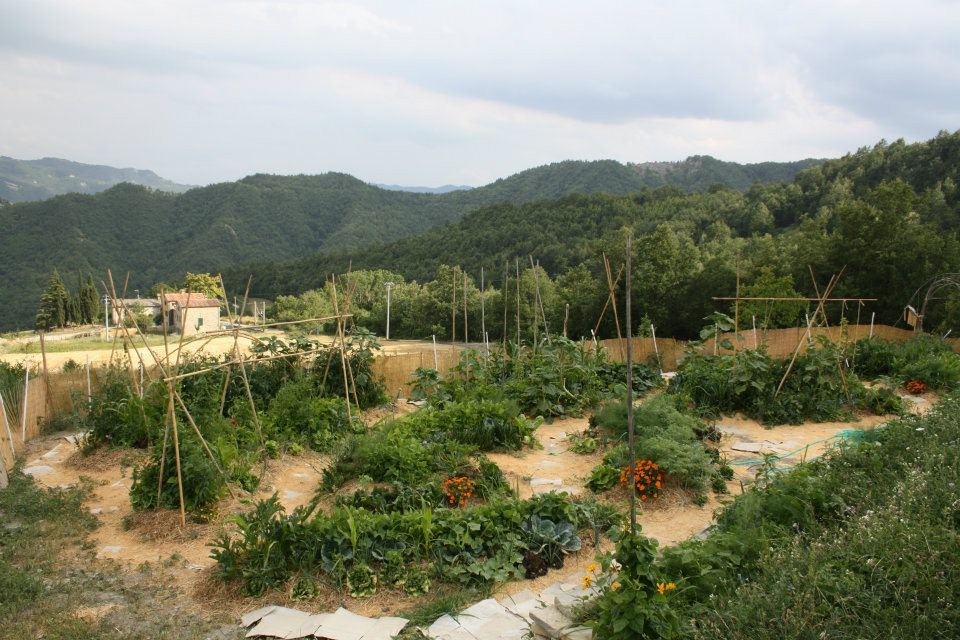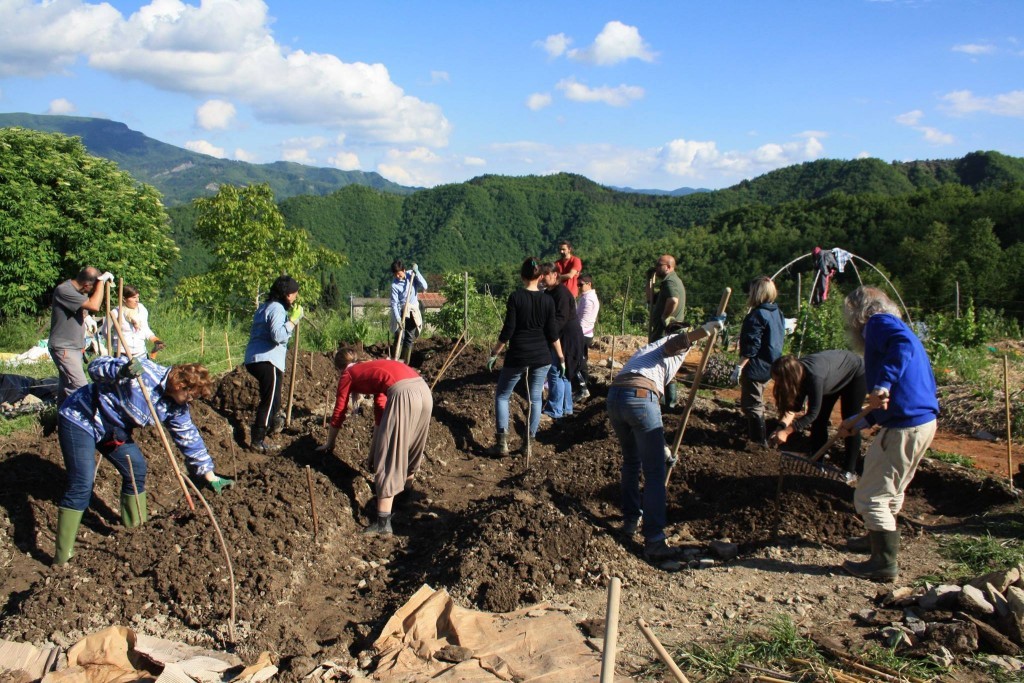SYNERGISTIC AGRICULTURE
We cannot talk about synergistic agriculture without speaking of its inventor, the Spanish permaculturist Emilia Hazelip (1937 – 2003) who developed and then spread this farming method that is inspired by Masanobu Fukuoka’s Natural Farming and Bill Mollison’s Permaculture.
The principles of Permaculture that Emilia most endorsed are living without destroying and the production of better food with the least energy and fuel consumption.
On the other hand, Fukuoka’s work was the demonstration that working the ground is not necessary. By constantly keeping the natural fertility of the soil we can get long-lasting results and a good quality production.
What is Synergistic Agriculture?
It’s a method of farming that respects Nature and at the same time can guarantee healthy and abundant crops. Synergistic Agriculture promotes a way of farming that uses the self-fertility of wild soil as fertilizer and its principles can be applied both in wide and small spaces, city or countryside, in cold and warm climates.
Which are the fundamental principles?
Synergistic Agriculture respects the following 4 principles:
- Do not work the soil.
No ploughing or hoeing. The soil shouldn’t be disturbed and by turning the soil over we interrupt the combined action of plant roots and chemical activity of bacteria, fungi and worms. - Do not fertilize.
The soil is fertilized by a permanent organic cover and the roots of plants. Roots, in particular, should never be pulled up, they remain in the soil and the leaves are left where they fall. - Do not use chemical pests or fertilizers.
The use of such substances is neither natural nor sustainable. - Do not compact the soil.
In order for the micro-ecosystems found in the soil to be sufficiently aerated, it is necessary to avoid compacting the soil.
Synergistic Agriculture in practice
First of all it necessary to prepare the land. This step should not be taken for granted and time and procedures depend on the initial condition of the ground (i.e. a field previously cultivated organically; a ploughed land treated with chemical products, etc.).
Regardless of the kind of ground, you’ll have to make sure that there is no plough pan, that is to say a compacted layer in cultivated soil resulting from repeated ploughing. In order to determine whether it’s present or not, we suggest to dig a hole (50 cm deep) and check if there is a layer of different colour than the rest of the ground. In case you find it, you will have to work the land with a ripper or by hand with a spade fork in order to break this layer of mineral salts.
The second step is to build a wind fence that will also be a great shelter for good insects and predators of parasites, as well as for the hibernation of hedgehogs and bird nests.
The next stage is the preparation of the raised beds where plants are cultivated. The beds can be straight, curve or mandala-shaped and their function is to mark the passages where people walk and work in order to avoid compacting the cultivated land. We suggest the beds to be 120 cm wide, while there is no limit of length. It is advisable to create passages 80 cm wide at least every 4-5 metres. The maximum height of the beds should be 30-40 cm, otherwise the cultivable surface would be too much reduced. The beds must be built with the same land of the vegetable garden you intend to create and a drip irrigation must be installed on them.

If the quality of your soil is good, there is no need to mix compost to the soil while building the beds, otherwise you can incorporate some superficially. The beds will have two cultivable surfaces:
- The central area, where the ground is deeper;
- The sides, whose height ranges between 15 and 40 cm.
When the beds are ready and before sowing any plant, some “permanent tutors” must be fixed to the ground. These tutors are arches that cross above the beds, they can be iron bars for building, diameter 12, as well as bamboo canes and their function is to guide climbing plants.

In the same bed at least 3 different families of vegetables must be planted in order to make the most of synergistic actions of plants. In general the sides of beds are used for cultivating plants that are complementary to the main crops. The plants to be sown in the sides are plants that grow vertically that belong to the lily family such as shallot, garlic, onion, leek, etc. This type of plants spread fungicide, antibacterial and insect repellent substances that will also protect your vegetables. Along with these plants you should also sow some fast-growing plants such as chicory or lettuce, leaving the roots in the ground when harvesting.
On the edges, between the central area and the sides, a row of legumes, peas or beans should be planted depending on the season. It is important to always keep the sides covered by mulch because it tends to roll down toward the passages. Besides legumes, in the central area of the beds other vegetable families should be planted: crucifers, solanaceae, cucrbitaceae, apiaceae, lamiaceae, rosaceae, asteraceae, etc.

Why mulch?
Mulch is a very important and a not-to-be-missed element of Synergistic Agriculture because it prevents the soil to compact and it protects from the consequences excessive sunlight, rain and wind. Moreover, it helps the development of microorganisms and especially earthworms. Mulch acts like a thermal cover, protecting the soil both in warm and cold seasons. Obviously mulch has to be a biodegradable material depending on our needs, such as straws, canes, leaves, paper, cardboard, etc.
What is the ultimate aim of Synergistic Agriculture?
Nowadays we depend on agriculture for feeding a constantly-growing world population. However, agriculture needs to take into account the life of the lands and the environment. Emilia’s aim was reproducing in agriculture the same soil conditions that in nature produce such perfect crops and, at the same time, building a new future where the respect for life is applied through our synergistic and environmental integration.
“We don’t have to be passive consumers. We can do something, we can self-produce a bit of food so that we can buy less, we can start from a garden or a balcony, a green space designed as edible land”. – Emilia Hazelip
Newsletter
ARGOMENTI
- Activities (8)
- Attività (10)
- Attrattive (16)
- Cosa fare (22)
- Farm products (4)
- Fattoria dell'autosufficienza (40)
- Fattoria dell'autosufficienza (62)
- Fauna (8)
- Flora (5)
- I nostri modelli (15)
- Istruzioni per viaggiare (2)
- News (63)
- News (97)
- Our models (14)
- Permacultura (30)
- Permaculture (23)
- Prodotti della fattoria (4)
- Senza categoria (4)
- Senza categoria (2)
- Things to do (22)
- Tourist attractions (15)




